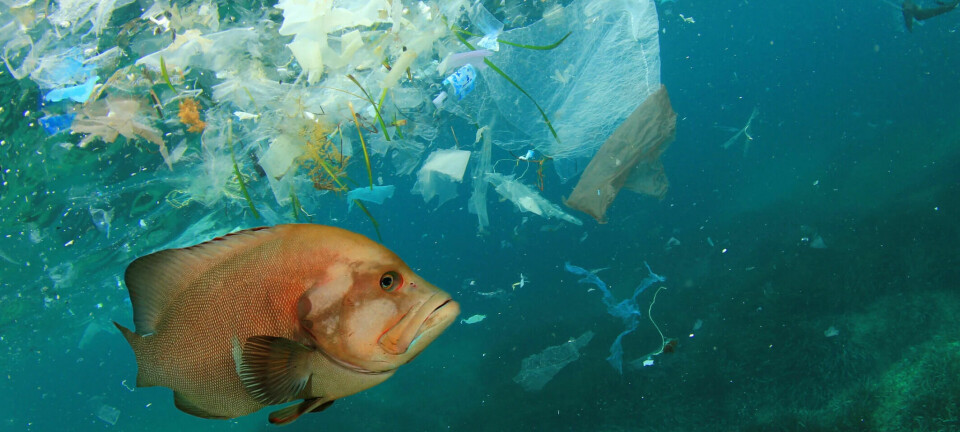Opinion:

Microplastics or microfibers: Does anyone really get what this is about?
OPINION: What we do know, is that all synthetic clothing and materials, sooner or later, will become microplastics, a «time-delayed» pollution bomb. And thus, they will ultimately become a problem for seabirds, and us.
A new report on microfibers in waterways is gaining attention, as it claims the results show more natural fibers than synthetic ones, and therefore demonizing microplastics is wrong. However, a very recent study on the intestines of seabirds gives a different conclusion: Fossil-based particles do cause harm.
The recent report from The Microfibre Consortium (TMC), together with the Norwegian Research Center/NORCE has analyzed samples taken along the coast of Kenya and Tanzania, and found that of 2403 textile fibers in the water, 55 per cent were of natural origin, 37 per cent were synthetic and 8 per cent viscose/rayon-based.
Every piece of plastic ever made is still in existence.
The study’s conclusion is therefore that synthetics should not be called out as the main problem, as natural fibers also need to shoulder their share of the blame for microfiber pollution.
As a backdrop, since around 2015, when microfibers emerged as an environmental issue, there has been a heated debate around whether the plastic-based microfibers (called microplastics, see info box) are both more prevalent and represent a higher reason for concern.
This goes to whether shedding of microplastics should be included in environmental labelling-schemes or if synthetics clothes should include a warning-label.
The question this study raises, is what is being conflated here? As stated, «many fashion brands and activists have suggested increased use of natural fibres as one potential solution to microfibre pollution on the grounds that they biodegrade more quickly».
Shrinking the sector is the goal
We have all along talked about «shrinking» the use of synthetics and the whole sector, not replacing one fiber with another. Even though we also want to see better use of fibers and materials that today go to waste, such as much strong wool, fish skins, and other materials dumped in the sea or just left to rot.
This is a theme for both Fibershed Nordenfjeldske and in the Amazing Grazing project.
In contrast, the message from TMC is what the fast fashion industry wants to hear: «We need more research before we can conclude». This translates into: Let’s continue a 7 per cent annual growth of synthetics, and fast fashion as a system with its exploitation and profitability.
Sand in the machinery
Polyester is cheap, it costs half as much per kilo as cotton, and is the backbone of today’s throwaway fashion model, based on cheap input and a globalized supply chain that obscures where the fibers come from, and also where they end up.
The only sand in the machinery currently are microplastics and the growing concern surrounding them. France’s Anti-waste and Circular Economy Law states that clothing containing 50 per cent or more synthetic fibers by weight (either recycled or virgin) must have a warning about microplastic shedding on its care label.
For years there has been talk about installing filters in washing machines, to stop leaching microplastics. But putting all emphasis on laundering is not necessarily the best way forward. This also forces the consumer to bear the burden of solving the issue, instead of dealing with the root of the problem.
It’s in the air
Washing is just one way in which microplastics are released in the environment, we must also consider tumble drying, wearing and using textiles.
A study done of the air outside Paris, showed 2 to 355 microparticles per square meter per day. Most of these microparticles were fibers, 28 per cent of which were synthetic. It’s estimated that humans can inhale up to 22 000 000 microplastics annually.
An often-unanswered question in such surveys is whether the fibres identified were of a textile origin.
One problem, is that the most common technique used had trouble differentiating between types of cellulose fibers, which leaves the door open to distinguishing between cigarette butts, toilet paper, disposable hygiene products and other cellulose-based materials.
Insights can be gained into fibre origin by assessing whether or not the fibres were dyed.
Fossil-finishes
Which bring us to another stumbling-block; the dyeing and finishing processes for textiles. Many of these are fossil-based, such as the finishes that we know as PFAS, and other highly problematic ones that give water- or dirt-repellency (which is one of the features of PFAS). If a natural fiber is treated, it will biodegrade slower.
In theory and in practice, natural fibers are biodegradable, depending on the marine or terrestrial conditions, this may happen faster or slower. The problem with synthetic fibers is that they will never biodegrade, but just keep breaking down into smaller and smaller pieces. Every piece of plastic ever made is still in existence.
As the dust settles
In soil, there is no question that natural fibers biodegrade. Fungus evolved on earth for this purpose.
Prior to this, vast amounts of forest material slowly turned into fossil carbon, hundreds of millions of years ago. Once fungus evolved nutrients became «cyclable», and plant- and animal-based debris biodegraded. Fungus that «eat» fossil-based materials exist, but are not prevalent in nature.
Some scientists claim they are the solution and wish to disperse them to solve the plastic-conundrum; however, more research is needed before we unleash them.
As the «dust» settles, maybe we need to rephrase the research questions. From «how much?» to «how bad?».
The canary in the coal mine
Back to the seabird whose intestines are in trouble. Scientists at the Natural History Museum in London announced the discovery of a new disease caused solely by the ingestion of plastic, a condition called plasticosis: a fibrotic disease caused by small pieces of plastic inflaming the digestive tract.
Persistent inflammation damages the tissues, which become scarred and deformed.
«What is really alarming is that microplastics enter cells and interfere with cell nuclei, which raises concerns about potential DNA damage. Another alarming example is that they can interfere with the digestion and absorption of important nutrients.»
Which means, this is a plastic issue, and they are been found in breast milk and lung tissue, in food and drink, and in farming sludge, some reports suggest four to 23 times as much microplastic pollution in soil than in the sea.
A time-delayed bomb
Thus, of greater importance, is the harm caused by different types of microfibres, rather than their prevalence.
In the meantime, a simple way forward is to tax all synthetic clothes and materials, based on weight. Tests on shedding so far have shown great fluctuations:
Some shed a lot during the first wash, others after the fabric becomes «tired» and old. All shed in use, even in incineration, but again, much will change over time, with spinning techniques, frequency of use and depending on what type of textile.
What we do know, is that all synthetic clothing and materials, sooner or later, will become microplastics, a «time-delayed» pollution bomb. And thus, they will ultimately become a problem for seabirds, and us.
References:
- «Plastic-eating» enzymes to target polyester
- Prevalence and characterisation of microfibres along the Kenyan and Tanzanian coast
- Sources and Dispersive Modes of Micro-Fibers in the Environment
- Is incineration the terminator of plastics and microplastics?
- Why is fashion still ignoring microfibres?
- Microplastics Are Polluting the Ocean at a Shocking Rate
- Beyond circular fashion: A new buisness model for the fashion industry
FURTHER READING:
Share your science or have an opinion in the Researchers' zone
The ScienceNorway Researchers' zone consists of opinions, blogs and popular science pieces written by researchers and scientists from or based in Norway. Want to contribute? Send us an email!































